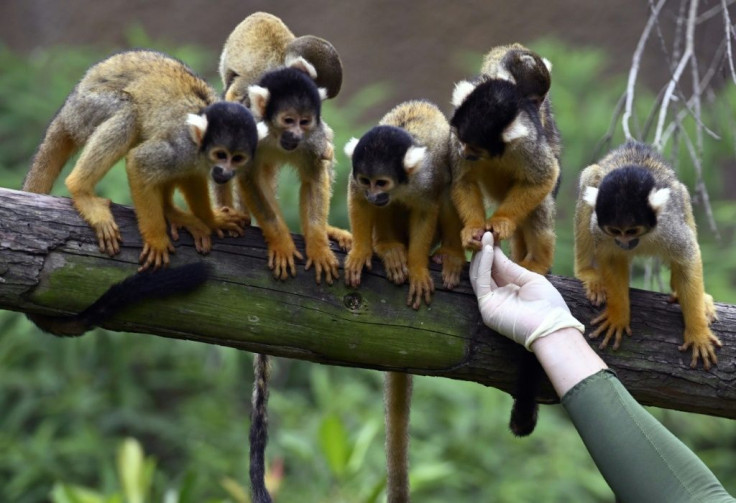11 Monkey Facts On Monkey Day 2020
KEY POINTS
- Monkey Day is celebrated on Dec. 14
- It is an event that many countries now celebrate to raise awareness about monkeys
- Below are some monkey facts to celebrate Monkey Day 2020
Monkey Day started with simple joke written on a calendar and students dressing up as monkeys, but it ended up becoming an international holiday that celebrates these primates and raises awareness about the threats they face.
The holiday, celebrated on Dec. 14, dates back to 2000, when Casey Sorrow and Eric Millikin were art students at Michigan State University. Sorrow told a Detroit newspaper that he came up with the idea partly as a way to combat the winter blues. He jotted down "Monkey Day" in a buddy's calendar, and then took a step further, as he and his art buddies dressed up as monkeys and impersonated them, according to the website National Today. Sorrow and Millikin also began blending the Monkey Day theme into their own art and alternative comics, which appeared online and at exhibitions.
Today, the holiday is celebrated not only in the U.S., but in Germany, India, the U.K., Colombia, Thailand, Pakistan and other countries. Also known as World Monkey Day and International Monkey Day depending on where you are, the holiday just doesn't celebrate monkeys, but other non-human primates, including apes and lemurs.
Although it's difficult to go and see monkeys and their fellow primates in person this year due to the coronavirus pandemic, you can still observe Monkey Day with the following facts about our close evolutionary relatives, courtesy of National Today, Britannica and The Science Explorer:
- A group of monkeys is called a "mission," "troop" or "tribe."
- There are over 260 species of monkeys, half of which are endangered.
- The world's smallest monkey is the pygmy marmoset. Weighing just about a quarter of a pound even at adulthood, they have the capability to jump up to 30 times their body length across the tree tops of the Amazon jungle.
- Apes are different from monkeys. As Britannica explained, while both are primates, which are close relatives of humans, there are differences between them, the simplest of which is that apes generally do not have tails while almost all monkeys have them.
- Although the fictional character King Kong is said to be a prehistoric great ape, Peter Jackson’s film "King Kong" was released on the fifth anniversary of Monkey Day. After all, Monkey Day celebrates "everything simian," not just monkeys.
- Howler monkeys are considered to be the loudest monkeys. According to The Science Explorer, the sounds they make can even be heard from two to three miles away.
- Monkeys can be divided into "Old World" and "New World" monkeys, with the former living in Asia and Africa, and the latter living in Central and South America.
- It is believed that the word "monkey" came from the German version of the Reynard the Fox fable, which was published around 1580.
- Tarsiers have massive eyes that are as big as their brain. This allows them to have excellent vision at night.
- Orangutan babies are nursed until they are about six years old and even stay with their mothers for years afterwards, giving them the longest childhood among all the animals in the world.
- The inaugural Monkey Day was celebrated by creators Casey Sorrow and Erik Millikin with their classmate in 2000.
Other excellent ways to celebrate Monkey Day this year would be to raise awareness about the threats that monkeys are facing today, or perhaps donate to an organization that helps protect and conserve these wonderful mammals.

© Copyright IBTimes 2025. All rights reserved.






















